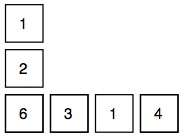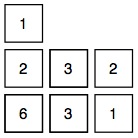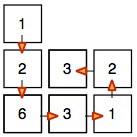Copyright © University of Cambridge. All rights reserved.
'Taking a Die for a Walk' printed from https://nrich.maths.org/
Show menu
Why do this problem?
This problem could be used when the four directions, north, south, east and west are being introduced or discussed. It could also be helpful if learners are apprehensive about number work as it gives an easy "open door" to number exploration and enquiry. Its openess means that it can be approached by a very wide attainment range. This problem presents an interesting context for encouraging children to visualise the die and predict the path of numbers.Possible approach
You could start with the group sitting around in a circle and using a big die to roll in the middle. Invite learners to tell you what they know about dice, perhaps by asking questions such as, "If $6$ is on top, what number is on the bottom?". What do the children notice about opposite faces of the die? (They add to $7$.)
When you get to introducing the actual activity there is a need to move the die carefully so that the footprint is seen to be in a grid formation. If you are involving the four directions, north, south, east and west, it would be a good idea to have a sheet with the compass points on it. Stress the rule that the die may not cross back over its path or go back over where it has just been. It
would help to have a large sheet of paper also on the floor where you can record the path of the die. As you roll the die, you could ask children to talk to a partner and predict the number which is about to appear on the top. This visualisation can be quite tricky and it requires a good understanding of the features of dice.
Set the class off on exploring their own paths, giving them each a die and squared paper. It would be an advantage if they worked in pairs so that they are able to talk through their ideas with a partner. Depending on how they get on, it might be worth stopping them after some time to share what they have been doing so far. At this stage, you could choose to focus in on a particular idea for
everyone to explore which has been stimulated by one or more pairs. Warn the group that you will expect them to feed back to everyone at the end of the session.
Once they have had more time to work, bring the whole group together once more to show their various "dice walks" and to discuss what they have discovered. What do they notice about the patterns they have created? They could compare, for example, adjacent numbers in two different "walks". What is the same and what is different about them? Can they give explanations for their observations?
Key questions
What numbers have you found?
Is the die going north, south, east or west now?You seem to have a system for doing this, can you tell me about it?
What do you notice about the number patterns?
Can you explain why that happens?



